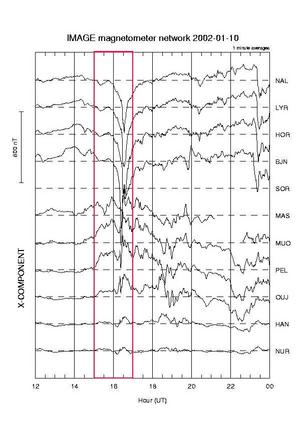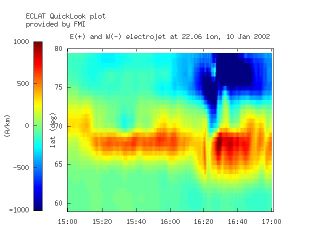Quicklook plots of 1D Equivalent Currents
|
From ground magnetometers the ionospheric equivalent currents can be calculated. These are currents that flow only within the ionospheric plane (assumed at 100 km altitude) and cause the same magnetic field on the ground as the actual ionospheric current system (which may be three-dimensional). So please note: Ionospheric equivalent currents are not necessarily equal to the actual currents! The 1D plots which are generated in this service are extracted from the corresponding ECLAT 2D equivalent current maps. For each time step the latitude profile along the middle meridian of the 2D current map (along 22 deg East) is shown in the latitude-versus-time plots. For the approach where 1D spherical elementary current systems are used to generate similar Latitude-versus-time plots, visit the page of FMI 1D on-line tool. For more information about the ECLAT 2D equivalent current products, download a manual (pdf) The results are displayed as colour plots that show the time evolution of the equivalent currents along a north-south profile. Red colours (positive numbers) mean eastward equivalent currents, blue colours (negative numbers) mean westward currents. Two plots are displayed:
Before computing the equivalent currents you need to give a baseline period, i.e. magnetically quiet period close to the event you are going to analyse. To find one, use the IMAGE User defined magnetograms. Please report any disturbances in the functioning of this page to Max van de Kamp at FMI.
|


